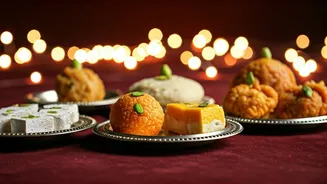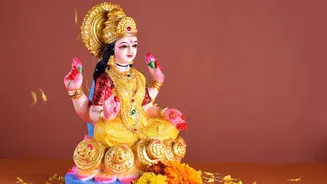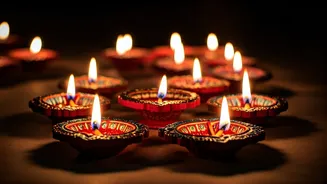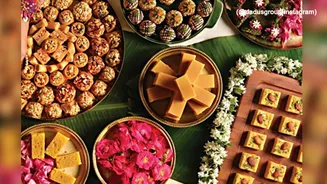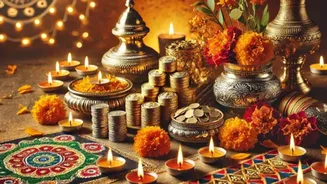The Significance of Dhanteras
Dhanteras, the first day of the five-day Diwali festival, is observed with great enthusiasm. It is a time dedicated to the worship of Goddess Lakshmi,
the deity of wealth, and Lord Kuber, the god of riches. The day is considered highly auspicious for buying new things, especially gold, silver, and other valuables. It’s believed that acquiring these items during Dhanteras brings prosperity and good fortune. Furthermore, the act of consuming certain foods on this day is thought to attract blessings and good luck. The combination of devotional practices, new acquisitions, and specific dietary choices forms the core of Dhanteras celebrations, making it a pivotal event in the Hindu calendar.
Sweet Delights and Milk
Sweets hold a special place in Dhanteras celebrations. They symbolize sweetness, happiness, and prosperity. Traditional sweets such as ladoos, barfis, and halwa are often prepared and shared among family and friends. These desserts are not just treats; they're offerings to the deities, signifying a desire for a life filled with joy and abundance. Milk and milk-based products, like kheer, are also considered auspicious. Milk represents purity and is associated with nourishment and well-being. Consuming milk or dishes made from it on Dhanteras is believed to bring good health and prosperity to the household, further enhancing the festive spirit.
The Role of Fruits
Fruits are an integral part of Dhanteras celebrations, often included in the offerings to the deities. They represent freshness, vitality, and the bounty of nature. Seasonal fruits are considered particularly auspicious, as they signify the abundance of the harvest. Pomegranates, for instance, are associated with fertility and prosperity, while mangoes represent sweetness and fulfillment. Eating fruits during Dhanteras is seen as a way to invite good health and to welcome the blessings of the gods. The practice of including a variety of fruits reflects the desire for a prosperous and fruitful life.
Savory Dishes and Spices
While sweets are prominent, savory dishes also play a role in the Dhanteras feast. Dishes seasoned with aromatic spices like turmeric, ginger, and cumin are often prepared. These spices not only enhance the flavor but are also believed to have health benefits and bring positive energy. Dishes like vegetable curries, dals, and rice are common, representing the desire for a well-fed and contented life. The inclusion of savory foods balances the sweetness of the desserts and emphasizes the importance of a balanced and fulfilling life. The preparation and sharing of these meals strengthen the bonds of family and community.
Nuts and Dry Fruits
Nuts and dry fruits are considered symbols of wealth and prosperity, making them essential during Dhanteras. Almonds, cashews, pistachios, and raisins are often part of the offerings and are consumed as snacks. These items represent abundance and are associated with good fortune and long life. They are often included in sweets and other dishes, adding richness and nutritional value. The tradition of eating nuts and dry fruits on Dhanteras is a reminder to appreciate the blessings of wealth and to seek continued prosperity in the year ahead. They also serve as a healthy and satisfying treat during the festivities.
Specific Regional Dishes
Dhanteras celebrations often feature regional variations in food. Across different regions of India, specific dishes are prepared based on local customs and traditions. In some areas, dishes made with rice and lentils are common, representing abundance and prosperity. Others may include traditional sweets specific to their region, such as gulab jamun or rasgulla. These regional specialties not only add variety to the celebrations but also showcase the diversity of Indian cuisine and culture. They bring a unique flavor to the festival, reflecting the distinctive culinary heritage of each area.
